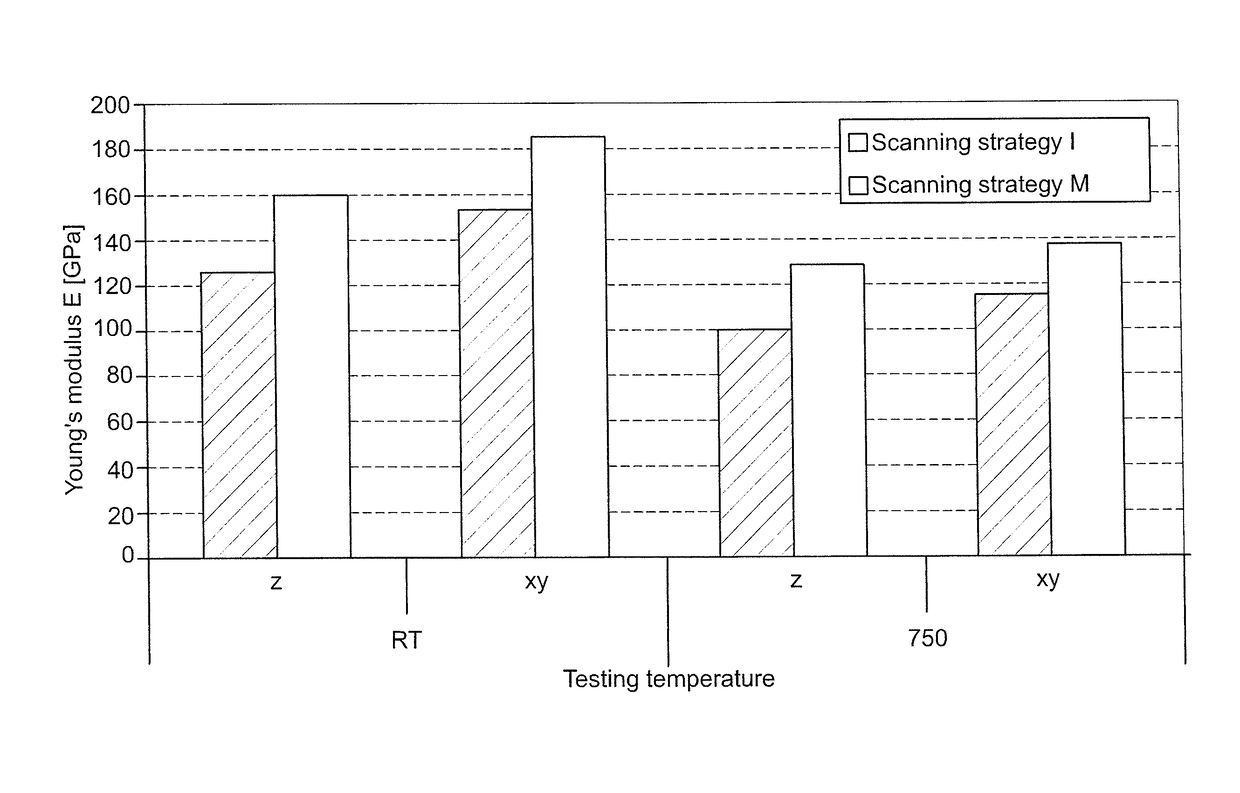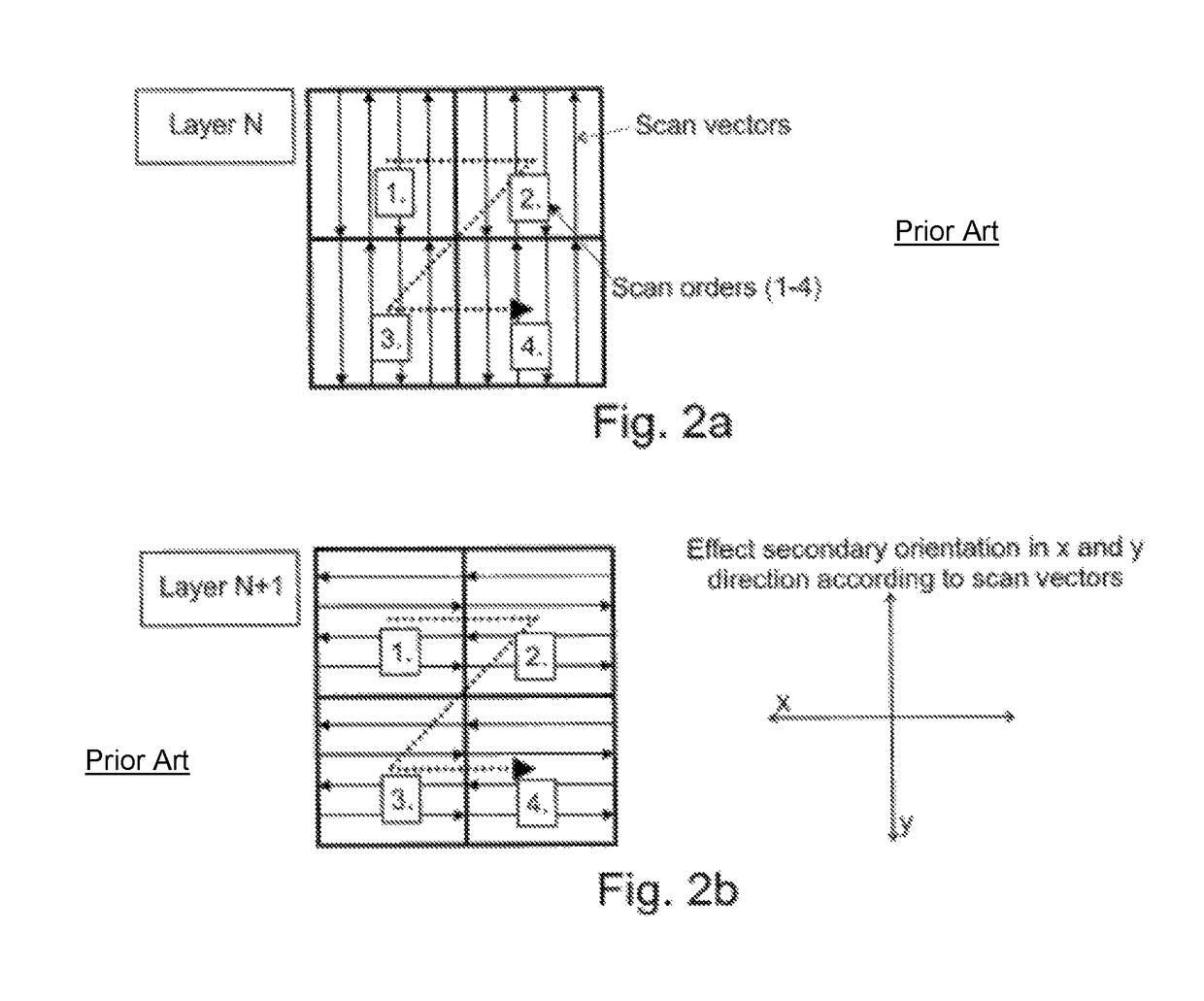Method for manufacturing a hybrid component
a manufacturing method and technology of hybrid components, applied in the direction of manufacturing tools, turbines, transportation and packaging, etc., can solve the problems of increasing the cost of components, increasing the difficulty of manufacturing sx or ds parts/components by casting, and the anisotropy of material properties, etc., to achieve the effect of reducing the cost of components and increasing the process productivity
- Summary
- Abstract
- Description
- Claims
- Application Information
AI Technical Summary
Benefits of technology
Problems solved by technology
Method used
Image
Examples
Embodiment Construction
[0065]As described above in the prior art, one characteristic feature of powder-based additive manufacturing technology is the strong anisotropy of material properties resulting from the layer-wise build-up process.
[0066]It has turned out that the mechanical properties along the z-direction are different to ones in the x-y plane, which is the powder plane. The Young's modulus along the z-direction (built direction) is generally lower than the Young's modulus in the x-y plane. This is shown in FIG. 6 for specimens made of Hastalloy® X by additive manufacturing with two different scanning strategies, that means two different scanning patterns, and which were tested at room temperature RT and at a temperature of 750° C. The Young's modulus was measured in the “as built” condition. Due to powder-based article production and the inherent high cooling rates of the energy beam-material interaction in these processes, the material is very homogeneous with respect to chemical composition and...
PUM
| Property | Measurement | Unit |
|---|---|---|
| angle | aaaaa | aaaaa |
| angle | aaaaa | aaaaa |
| Temperature | aaaaa | aaaaa |
Abstract
Description
Claims
Application Information
 Login to View More
Login to View More - R&D
- Intellectual Property
- Life Sciences
- Materials
- Tech Scout
- Unparalleled Data Quality
- Higher Quality Content
- 60% Fewer Hallucinations
Browse by: Latest US Patents, China's latest patents, Technical Efficacy Thesaurus, Application Domain, Technology Topic, Popular Technical Reports.
© 2025 PatSnap. All rights reserved.Legal|Privacy policy|Modern Slavery Act Transparency Statement|Sitemap|About US| Contact US: help@patsnap.com



